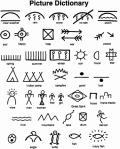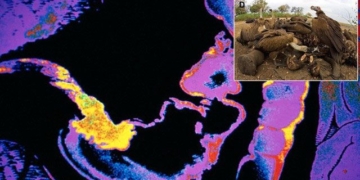A recent scientific study has revealed evidence about the diets of prehistoric people living in North America during the last Ice Age, with an intriguing finding: woolly mammoths were a staple food in their diet.
The study, published in the journal Science Advances on December 4, is based on chemical analysis from the skeleton of an 18-month-old child found in southern Montana, USA. Since the child was still breastfeeding at the time of death, the chemicals in the child’s bones reflected the mother’s diet through her milk.
The research findings indicate that the mother’s diet primarily consisted of meat from large animals, with woolly mammoths being the main food source.

Woolly mammoths were a staple food in the diet of prehistoric North Americans – (Illustrative photo: AFP).
According to the study, meat from large animals constituted up to 96% of the mother’s diet, with woolly mammoths making up about 40%. Other animals included deer, bison, camels, and horses, while plants and small animals contributed only a very small portion.
Archaeologist James Chatters from Applied Paleoscience (Washington) stated: “Large animals, especially the Columbian mammoth, provided a vast source of food and energy-rich fat. One mammoth could supply enough food for a community of women, children, and elderly individuals for many days, even weeks, while hunters sought the next prey.”
The Columbian mammoth, a relative of modern elephants, stood up to 4 meters tall and weighed up to 11 tons. The mother and child in the study belonged to the Clovis culture, a community of nomadic hunters that existed around 13,000 years ago. This community was notable for its hunting tools, particularly large stone spearheads, which enabled them to hunt large animals.
The study not only reinforces the hypothesis that the Clovis people primarily hunted large animals and did not focus on gathering plants or hunting small animals, but it also explains why they were able to spread rapidly across North and South America in a few centuries. This hunting strategy allowed them to follow herds of animals, expanding their living range.
Ben Potter, an archaeologist at the University of Alaska Fairbanks and co-author of the study, believes: “These research results help us understand more about the extinction of large animals at the end of the Ice Age, while also indicating that humans may have played a more significant role than we previously thought.”
At the end of the Ice Age, as warming climates reduced the habitats of woolly mammoths and other large animals, the Clovis people encountered prey that were not yet accustomed to human presence, making hunting easier.
Chatters explained: “The Clovis were very sophisticated hunters, their skills honed over thousands of years of hunting large animals in grasslands from Eastern Europe to the Yukon territory in Canada. When they arrived in North America, the animals were unfamiliar with humans, making hunting easier and contributing to ecological stress, leading to higher extinction rates.”
All these findings align with previous archaeological evidence, which discovered that Clovis tools are often associated with the bones of large animals, particularly those they hunted.





















































